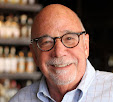If we can characterize the digital advertising era thus far, it has been an era of incrementalism.
- Marketers are very busy developing "content" that reaches a tiny percent of consumers.
- They are sending out Tweets and Facebook posts that only reach a miniscule proportion of the population, all of whom are already "fans" of their brand.
- They are buying search terms that reach only the small number of people actively shopping in their category.
- They are creating native advertising that realistically has the capacity to reach a minute proportion of the population.
Here's an example. I did some math*
Coca-Cola has almost 100 million Facebook fans. Impressive, right?
They also sell 1.8 billion servings of Coke a day. Let's give Coke the huge benefit of the doubt and assume that everyone who ever followed Coke on Facebook is still active. This means that if they reached all their followers on Facebook on any given day they could reach about .05 of their customers.
But a Facebook post doesn't reach all followers. It reaches about 2.27% of followers. So if all their fans were on Facebook at the right time the largest fraction of their followers they could expect to reach would be .05 x 2.27% which equals about .001. This is not a large number.
But wait, it gets smaller. Among people who are reached, about 11% engage (this is a very charitable estimation which I don't believe for a second, but we're being generous here, right?) So the actual fraction of its followers that Coke could realistically expect to influence with a Facebook post is .0001.
It's hard to get much closer to zero.
*Warning: Exposure to copywriter math can lead to fatigue, hallucinations, and chronic diarrhea.





No comments:
Post a Comment